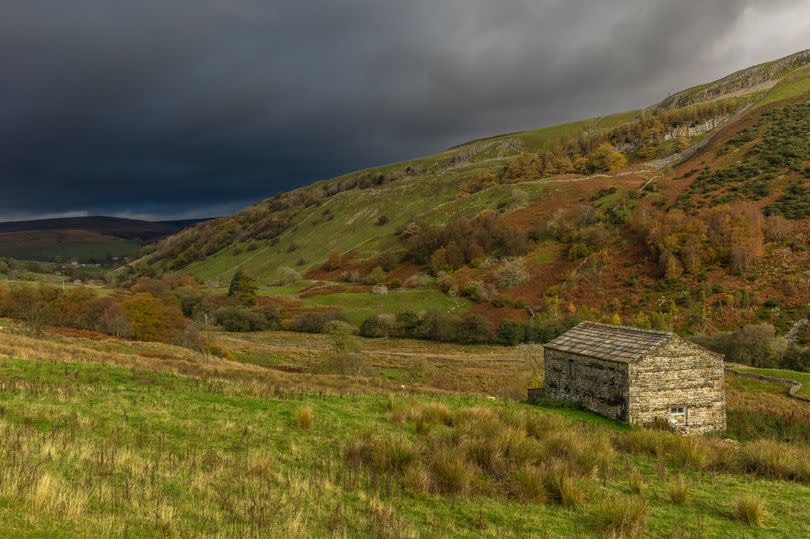The 'ghost villages' of Yorkshire: The once thriving communities now empty and abandoned

Yorkshire is dotted with numerous villages, towns and cities. However, some of these places, despite being inhabited for centuries, have been left behind.
The expansive Yorkshire landscape is home to several 'ghost' villages. These were once bustling communities that have since been abandoned.
The reasons for their abandonment are varied and numerous, with historians and archaeologists still seeking answers for many of these locations.
From coastal erosion to the shift towards sheep farming, there are myriad reasons why these villages have been deserted over time. Regardless of the reasons, these towns and villages remain etched in history as former hubs of Yorkshire civilisation, now surrendered to nature, reports Yorkshire Live.
Here's a look at some of the abandoned towns and villages across Yorkshire.
Wharram Percy
Wharram Percy, located near Malton in North Yorkshire, is one of the most well-known abandoned villages in Yorkshire.
Deserted in the early 1500s, the village has remained uninhabited since the Tudor era. English Heritage states that prior to its abandonment, it was occupied for approximately 600 years and was home to the noble Percy family.
Over time, however, the village declined. Historians continue to explore the reasons for this decline.
It is believed that a transition to sheep farming and the subsequent eviction of many locals led to the end of this small village.
Today, the old medieval church still stands and the site welcomes those interested in its history.
Colden Parva
In stark contrast to Wharram Percy, which remains accessible for visits today, you're unlikely to find any remnants of Colden Parva.
The reason is simple: it's submerged under the sea. The recent spotlight on coastal erosion and rising sea levels due to climate change has highlighted the challenges faced by seaside villages, but this awareness comes a century too late for some.
Colden Parva was situated in East Riding of Yorkshire, but coastal erosion led to its abandonment in the 1500s. Two farms persisted until the late 1800s, but by the early 21st century, all signs of the area had been washed away.
Surrounding Hornsea towns
Coastal erosion is common along the East Yorkshire coast, and Colden Parva is not the only village to be lost below the waves.
The Hornsea area has been particularly badly affected, with four villages lost to the sea over the centuries. These are:
Hornsea Beck, completely destroyed by the 1700s
Hornsea Burton, destroyed by the 1800s
Northorpe, likely destroyed in the 1700s
Southorpe, destroyed by the beginning of the 1800s
West End
It's not just the sea that has claimed parts of Yorkshire; Thruscross Reservoir also conceals a village beneath its surface.
West End was largely depopulated following a decline in the textile and flax industry, and in 1966, the village was completely abandoned to make way for the reservoir's construction.
Now, when conditions are right and water levels are low, West End can be seen emerging from the depths like a less Greek Atlantis.
Ravenser Odd
This town, with its peculiar name derived from the Vikings, was established as a significant port, collecting dues from hundreds of ships annually.
The town was founded in the mid-13th century and quickly became a major port.
Situated just off Spurn Point, the city boasted over 100 houses and held more importance than Hull itself. However, shifting sandbanks soon changed that.
Gradually, the town's population dwindled due to flood damage, and following the devastating Saint Macellus's Flood, which claimed the lives of 25,000 people across Europe, the town was completely obliterated.
Scar
Among these villages, Scar stands out as a 'pop-up' village that vanished as swiftly as it appeared.
Motivated by the need for water, it was decided to build a dam along the River Nidd to supply water to Bradford. This decision eventually led to the construction of the Scar House Reservoir.
Due to the enormous manpower required for such a colossal project, which commenced in 1921 and spanned 15 years, a small village was built to accommodate the workers.
Scar village housed 2,000 people but was entirely abandoned once the project was completed.
East Tanfield
East Tanfield, another lost village not found in North Yorkshire, once stood near Ripon along the River Ure.
Abandoned in the 1500s, the village was mentioned in William the Conqueror's Domesday Book. Today, the name persists as the designation for the civil parish, although no village exists there anymore.

 Yahoo News
Yahoo News 
